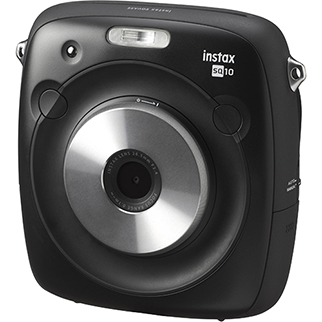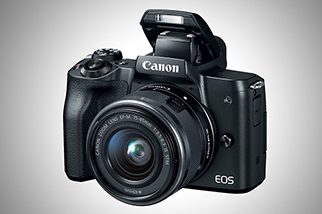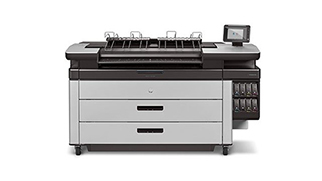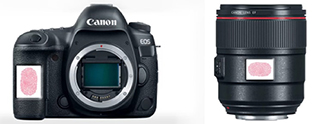
Author Archives: Administrator


Sunil Nayyar appointed as the new Managing Director for Sony India
Sony India recently announced the appointment of Mr. Sunil Nayyar as its new Managing Director with effect from April 1, 2018. The change of guard marks a historic milestone, with Sunil being the first Indian to be appointed as Managing Director for Sony India. According to the company, in this new role, Sunil will be responsible for spearheading the overall growth and profitability of the company within the region, by driving an integrated business and marketing strategy and directing excellence in market performance across all categories.
Speaking on his appointment, Sunil Nayyar said, “Being one of the most recognized consumer electronics brand, it is an exciting time to lead the company’s direction in India. In this time of transition, I look forward for an insight from our stakeholders and help guide in further strengthening Sony’s presence in India. I am confident, that we will continue to harness our energies to expand our footprint and offer the best in class technology to our consumers.”
Kenichiro Hibi, former Managing Director of Sony India, held the position for six years from 2012 till 2018, has now been appointed as President for Sony Brazil effective April 1, 2018.

Leica Cameras now on Amazon India

Vivo launches V9 with dual rear camera and seamless design


Fujifilm won the prestigious “iF Design Award” with 10 products in recognition of their design and performance
Fujifilm was recently awarded the “iF Design Award 2018”, sponsored by the international design promotion organization iF International Forum Design (Hanover, Germany), for 10 of its products including the 3D image analysis system “SYNAPSE VINCENT” 3D image analysis system, the hybrid instant camera “instax SQUARE SQ10”, ultrasonic processor, and broadcast lenses. The award is organized by the iF International Forum Design in Hanover, Germany, an international organization for design promotion.
The iF Design Award is an international design award launched in 1953, and is reportedly considered to be one of the top three global design awards, alongside Germany’s “Red Dot Design Award” and the United States’ “IDEA”. This year, there were 6,401 entries from 54 countries and regions judged by 63 experts.
According to the press release, the company received awards for a wide variety of products from business products, including a 3D image analysis system for medical use, to consumer products such as the instax series, and was highly-rated not only for external design but also from the perspective that each of the awarded products offer high-performance, ease-of-use, and user interfaces that make them comfortable to operate.
The Instax square SQ10, which was one of the winners is a retro looking camera that Fujifilm launched recently and it shoots 1:1 photographs and is a hybrid which has a memory slot to store digital images (1920 x 1920 pixels) as well as prints 1:1 instant photographs.

Canon Unveils the EOS M50, 4K Mirrorless Camera
Canon has announced the EOS M50, the first camera capable of 4K video recording in Canon’s mirrorless lineup. “For photographers actively seeking to upgrade their skills, the EOS M50 is an all-around, entry-level camera with an extensive list of user-friendly features that encourages users to broaden their creative visions,” says Canon.
Inside the EOS M50 is
a 24.1-megapixel APS-C CMOS sensor with an ISO range of ISO 100-25600
(extendable to 51200). The M50 sensor packs Dual Pixel technology,
which allows for speedy, sharp, and smooth autofocusing for both
photo and video. In respect to video recording, the M50 shoots 4K at
24fps, 1080p at 60fps, and 720p at 120fps. Video files have a maximum
length of 30 minutes. On the back of the M50 is a built-in
2.36-million-dot OLED electronic viewfinder. Underneath it is a
3-inch swiveling touchscreen LCD. The screen can be used for Touch
and Drag AF for selecting your desired point of focus with your
finger.
Other specs and features include a DIGIC 8 image processor, eye detection autofocus, combination 5-axis image stabilization that plays nicely with lens IS, a pop-up flash, Wi-Fi/NFC/Bluetooth wireless connectivity, and a new silent mode with virtually zero shutter sound.
The Canon EOS M50
will be available starting in April 2018. The camera by itself will
cost $780, and it’ll also be bundled with an EF-M 15-45mm f/3.5-6.3
IS STM lens for $900 or with the EF-M 55-200mm f/4.5-6.3 IS STM as
well for $1249.

Fujifilm launches the XH-1, a new addition to Fuji’s X-series lineup
Fujifilm announced the launch of the opulent FUJIFILM X-H1, the performance mirrorless digital camera in the X Series known for its superior image quality created by Fujifilm’s proprietary color reproduction technology.
The X-H1, with a new design, robust and durable body, it incorporates a range of extremely useful features that support shooting in various scenarios demanded by professional photographers and videographers. The X-H1 is the first X Series model to include the latest 5-axis in-body image stabilization (IBIS), which has a maximum of 5.5 stops as claimed by Fuji. The superior image quality with the memory color will be achieved in the various scenes in addition to easy operation. It is also mounted with the flicker reduction mode which enhances the quality of indoor sports photography.
In addition to the camera’s dust-resistant, water-resistant properties, and the ability to operate in temperatures down to -10°C, the camera also uses a 25% thicker magnesium alloy compared to the X-T2. FUJIFILM has also modified the structure for attaching the mount, resulting in a more compact size and lighter weight body that maintains high precision and strong resistance to impact shock torsion and other sources of deformation.
The Fujifilm XH-1 comes with a 24.3 megapixel (APS-C) X-Trans CMOS III with primary color filter and in-body image stabilisation. It also features video features like 4K which is much standard these days for cameras of this performance.

HP announces two new printer series in its digital printing portfolio
HP recently announced two new printer series in its digital printing portfolio – the HP PageWide XL 5100 printers and multi function printers that reportedly prints up to 50 percent faster output, enabling technical production providers to grow AEC volume and expand business in color applications; and the HP DesignJet T1700 printers, next-generation 44-inch solutions for CAD and geographic information system (GIS) workgroups to produce highly accurate documents and maps with powerful processing and a new level of security.
HP PageWide XL 5100
According to the company, at speeds up to 20 D/A1-size prints per minute with quick 28-second first page out, the new HP PageWide XL 5100 printers and multifunction printers joins the fastest printer portfolio in the market to equip enterprise print rooms, central reprographic departments and reprographic houses for enhanced mid-volume production in both color and monochrome. The series reportedly delivers technical documents with quick turnaround and low operating costs for architects and engineers, in addition to geographic information system (GIS) maps and point-of-sale (POS) poster applications.
“The debut of new HP PageWide XL printers is another giant leap on the HP journey to offer continued innovation in large format printing for the designers of the future,” said , Mr. Devang Karia, Country Manager-Large Format Design, PPS-GSB, HP Inc. India. “The breakthrough PageWide XL platform with even faster printing speeds will also help our customers move the needle for business with immediate monochrome and color prints delivered from one unique printer.”
According to the company, with more than 5,000 units shipped and 3 billion ft² (300 million m2) printed since the HP PageWide XL printer launch in 2015, more customers are discovering the value the market -leading HP PageWide XL printers bring to businesses across the globe. HP PageWide XL printers do the job of two printers in a single device, providing both monochrome and color prints at breakthrough speeds: the Power of One.
According to the press release, additional benefits of the new series include:
Set a new technical document standard with crisp lines, 2-point text, smooth grayscales, and vibrant color.
Print/scan/copy in monochrome and color with one single device in 50% of the time with a consolidated workflow5.
New advanced functionality for the integrated scanners such as smart background removal.
ISO 11798 certified HP PageWide XL pigment inks provide long-term storage, light/water resistance.6
Help keep data safe—self-encrypting HDD with AES-256, Secure Disk Erase, and IPSec.
The HP PageWide XL portfolio also reportedly features new software solutions for increased productivity. HP SmartStream offers two new modules. According to HP, Document Organizer, enables the user to automatically rename large volumes of files using innovative OCR technology, for significant time savings in job management. Pixel Analysis, provides accurate quotes before printing using the job pixel coverage. HP SmartTracker software is a tool to help users control printing costs and enable reimbursement. New features have also reportedly been introduced for HP HD & SD Pro Scanners to improve operator productivity, image quality and background cleaning capabilities. A new output tray is also said to streamline both the scan and copy workflows.
HP DesignJet T1700
HP DesignJet T1700 printers incorporates new added features that make it the most secure large format workgroup printer available today. The improved security is reportedly designed to help enterprises print CAD and GIS applications while protecting printers and data from unauthorized or malicious access in infrastructure construction, urban planning as well as utilities industries such as oil, water, gas, and electricity.
“Security is a top concern in enterprises today as connected devices and increasingly open office spaces are pervasive. At the same time, data breaches are growing at an alarming pace. In the first half of 2017, the worldwide breach level index was up more than 160%” said Mr. Devang Karia, Country Manager-Large Format Design, PPS-GSB, HP Inc. India. “The HP DesignJet T1700 Printer Series includes unique advanced security technologies designed to keep corporate network printers, their documents and data protected.”
According to the press release, features include a new self-encrypting hard drive on the printer that ensures it is only readable by the printer itself, even if removed from the device. For additional device security, HP Secure Boot ensures BIOS protection, and Whitelisting only allows approved firmware to be installed and run on the device.
With GIS files constantly growing in size with the increase in their complexity and data, the new 44-inch HP DesignJet T1700 printer is said to offer a new, powerful processing architecture using a 500 GB hard disk to smoothly process this information and improve the printing experience of GIS practitioners. The first workgroup large-format printer to embed the Adobe PDF Print Engine, it can also more efficiently handle very heavy files, freeing up PCs in virtually no time to continue working.
The company claims that the HP DesignJet T1700 also brings improved color quality and precision for more accurate maps and renderings, enabling GIS workgroups to make better decisions. A new set of six HP Bright Office Inks with tuned colors profiles and a High Density Printhead deliver bold color and accurate image quality, in addition to more precise colors, including gray and soft tones.
Additionally, HP Click printing software included in this series can be used by everyone on the team to easily print project sets and PDF documents.
Former Lexar Executives Start New Company and launch ProGrade Digital
ProGrade Digital, a new company founded by former Lexar executives, recently announced a new line of products designed to uniquely fill the needs of today’s high-end DLSRs, camcorders and digital cinema cameras. Memory cards will reportedly be offered in a variety of formats and industry-leading capacities. According to the press release, the company will also design and market a selection of card readers, starting with a CFast & SD Dual Slot Workflow Reader that boasts a USB 3.0, Gen. 2 transfer protocol. ProGrade Digital’s new memory cards and card readers will become available in the month of February on their own website as well as some online shopping websites like Amazon.com and B&H Photo and Video.
ProGrade Digital was founded by former executives from Lexar who held management or technical leadership positions at the company which worked in memory card development for digital photography. The team reportedly has more than 60 years of combined experience in the design, development and manufacture of memory cards gained while working for Lexar, SanDisk and other firms. The company stated that leveraging its experience and industry relationships, the team will focus exclusively on developing and marketing memory cards, card readers and software optimized for use within professional cinema and photography markets.
“Our goal is to be the professional’s source for top performing, professional grade memory cards and workflow solutions,” says Wes Brewer, founder and CEO of ProGrade Digital. “We will be committed to focusing our efforts on the digital imaging pro who is meticulous about his equipment and workflow-delivering the best service, plus best product quality and reliability.”
Memory Card Key Features
Professional-level capacities for CFast 2.0 and SDXC UHS-II memory cards
Optimized controllers specifically designed for use in professional-grade cameras
Rigorous full-card testing with serialized tracking of key components and manufacturing data for the highest quality control
Component-level testing down to individual memory chips for optimal quality
3-year warranty
Card Reader Key Features
Dual slot reader for CFast 2.0 and SDXC UHS-II card formats
USB 3.0 Gen. 2 transfer speed of up to 10Gb/second
Supports concurrent full-speed flow of data from cards in each slot
Portable and compact
Includes two 18″ connection cables: one for Type A to Type C and one for Type C to Type C
Magnetized reader bottom firmly connects reader to laptop (using included metal mounting plate)
2-year warranty
| Card Format | Speed | Capacities | Pricing | |
| CFast 2.0 | 550MB/sec | 128GB, 256GB, 512GB | $229.99, $349.99, $699.99 | |
| SDXC UHS-II, Class U3 | 200MB/sec | 64GB, 128GB, 256GB | $54.99, $94.99, $189.99 | |
| Reader | Supported Media | Interface | Speed | Pricing |
| CFast & SD Dual Slot Workflow Reader | CFast 2.0, SDXC | USB 3.0 Gen. 2 | Up to 10Gb/sec | $79.99 |

Canon may introduce fingerprint ID on DSLRs and Lenses
Fingerprint id has become a part of our daily lives as most smartphones these days provide this feature. What would happen when cameras start providing the same? Canon has apparently developed a fingerprint ID system that can identify the photographer using the camera or lens. Just as we have multiple user accounts in a desktop or laptop, these cameras can identify the user according to the fingerprint and immediately change their settings to pre-saved ones for each.
Canon Rumors recently reported that a new Canon patent published this month in the US (US20180012061 A1) describes an “electronic apparatus having finger authenticating function.”
According to Canon Rumors “This patent covers fingerprint ID on your cameras and lenses that can control custom functions such as IS, AF and likely anything else you can think of. It also offers the ability to customize the camera and/or lens for multiple users as well as offering a complete lockout of the gear.”
The patent and illustrations describe and show a camera and lens that have a fingerprint ID reader built into them. Here are the camera and lens illustrations found in the patent:

While there’s no guarantee that this one will ever appear in a production camera or lens, and can very well remain a rumor but it is quite fascinating to see camera companies trying out new things and taking inspiration from other things.
